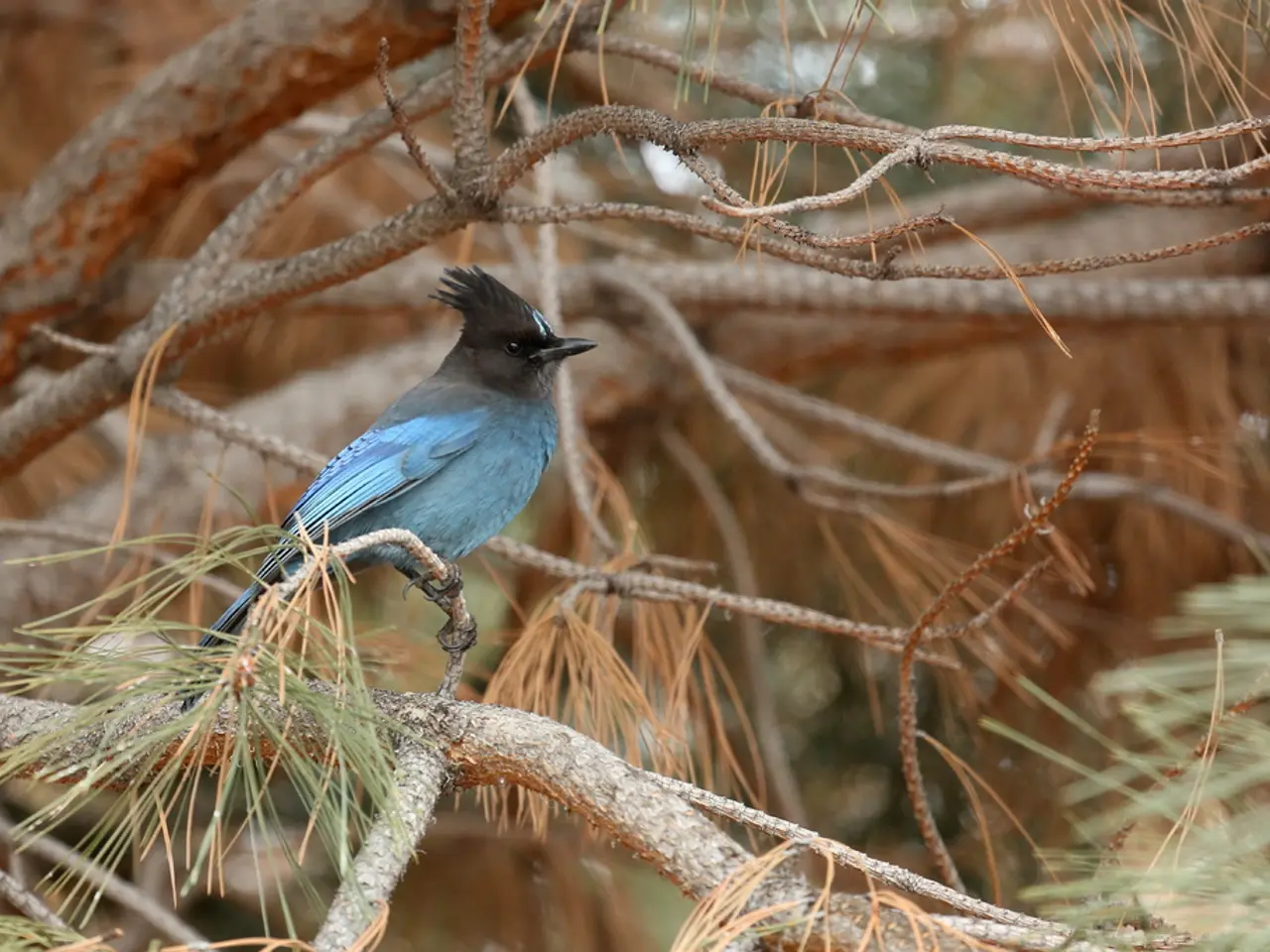Predatory birds shield vineyards at England's Rathfinny, securing wine grapes
In a bid to reduce its environmental impact, Rathfinny Wine Estate, a certified B Corp company, is trialling the use of birds of prey for pest control in its vineyards. This innovative approach, already common in some vineyards in California, is expected to save over 300 kilometres of plastic netting that would normally be used to protect the vines.
Sarah Driver, Rathfinny's co-founder and co-owner, stated that they have used nets in the past but are now exploring alternatives. "We're excited to see how this trial will progress," she said.
A specialist falconry team is employing a variety of birds, including falcons, hawks, and a Chilean blue eagle, to provide several lines of defense for the grapes. The hybrid bird, representing a peregrine falcon cross-bred with a Gyrfalcon, is being used due to its speed, agility, and size, which allows it to chase off bigger birds such as seagulls. Another hybrid falcon, a peregrine crossed with a South American Aplomado, is being used to ward off pigeons.
The Chilean blue eagle, also known as a black-chested buzzard eagle, stands guard at the estate, while Harris's hawks patrol the perimeter. The UK's smallest bird of prey, the Merlin, is also part of the team, chasing off smaller birds.
These birds are patrolling the skies from dawn until dusk to keep seagulls, pigeons, and crows away from the grapes. This method of pest control is not new; a 2012 study published in the journal Conservation Biology found that introducing falcons could lead to a significant reduction in grape losses.
In September 2025, another English vineyard company in Sussex announced the deployment of a professional falconry team to use birds for smoke protection in their vineyards. This move towards sustainable pest control methods is gaining traction in the industry.
The 2025 harvest at Rathfinny is expected to be particularly promising, following a record hot summer. With the earlier-than-usual harvest date set for 25 September, the birds of prey are likely to play a crucial role in protecting the grapes. There are alternative meals for hungry birds nearby, as there's currently plenty of food available in the hedgerows around the estate.
This trial marks a significant step towards Rathfinny's goal of minimising its environmental footprint while maintaining high-quality wine production. By replacing the plastic nets used for protection every three-to-five years with the natural deterrence of birds of prey, Rathfinny is demonstrating its commitment to sustainability.
Read also:
- Wawa avian tests positive for West Nile disease
- Individuals suffering from ailments such as arthritis or asthma could potentially secure £30,000 in financial aid for home renovations at no cost to them.
- Revising hair care practices with cynorrhodon extracts for addressing hair fragility
- Hidden beneath the appealing aesthetic of Consume Me's artwork lies a more ominous nature








